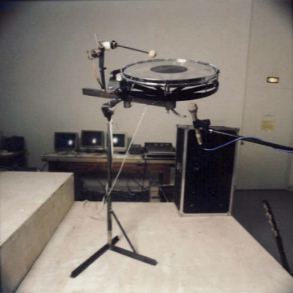The Three Sirens
A self learning robotic rock band
| Free MP3 audio, music videos and more images of the band can be found on the band's web site at: | ||
| http://www.the-three-sirens.info | ||
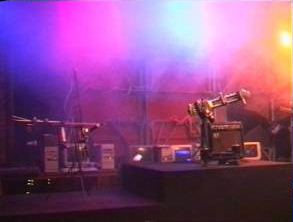
The Three Sirens are not conventional musical instruments but autonomous, self learning robot musicians. They are not controlled by humans. Artificial neural networks control every aspect of the robot's activities. This means that the authorship for their music does not belong to any living being (no predefined material or musical knowledge is available to the system), all musical material is generated by self organizing learning processes in an improvising manner.
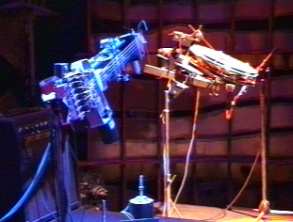
Detailed description of Aglaopheme, the guitarrist
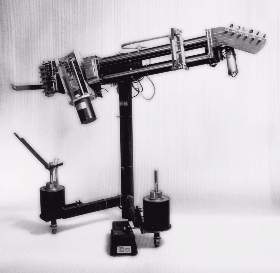
The other Members of the Band
In order to vary the pitch, the robot uses one strong solenoid to adjust the tension of the string. The machine has two mechanisms to cause vibration of the string: a motorized bow and a slapping device.
Aciilyzer, the voice of The Three Sirens is still somewhat bodyless. Again, there is a neural network that takes audio spectrum data as sensorial input and that is in control of an sound generating device. But in case of this band-member the visual appearance of the machine is very boring.
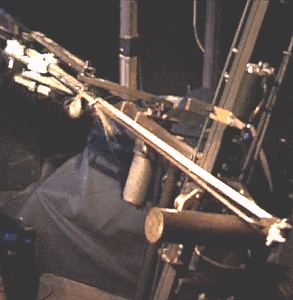
The percussionists in the band are operated differently from the melodically instruments. The rhythm machines are basically just hooked up to the system update frequency. If for example the band plays at 100 bpm, and the guitar- and the bass-system perform a learning cycle every quarter note (roughly 6 analysis per second), the bass drum would make a kick once per measure. All percussion devices can be programmed to act with different repetition rates within this basic quarter note structure.
Thelxiepeia, the drum was build around an existing rototom, a drum that was fashionable in the seventies. On this drum the player could change the pitch during playing by turning it. I motorised the rotational activity and added a mechanic drumstick.
LynxArm is a small five axis robot arm kit that I bought during a robotic exhibition in Vienna. After assembling the kit I changed one mechanic function and attached a small camera to what originally was the gripper. I also attached some sound pickups to the framework. The robot now knows two modes of operation. It either follows directly the spectrum analysis of the guitar sounds or knocks the camera against a small wooden board at system update tempo divided by four.
The Questions
1. How can it …?
2. If it learns, what are the criteria?
3. How does it know what is good and what is bad?
4. The names, where do they come from?
My answers are:
1. I don't know, it simply does it.
2. + 3. No criteria, no predefined musical knowledge, the acoustic world is the teacher. The musical systems that we humans developed in the last couple thousand of years did not come out of thin air. It is all derived from the physical constellations of our world and of our hearing apparatus.
4. Greek mythology. The sirens that tried to distract Odysseus have individual names. Aglaopheme for example is one of them. The name translates "the one with the bright voice".
